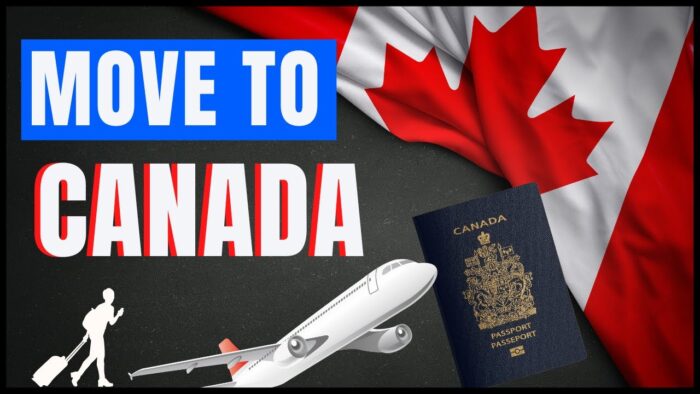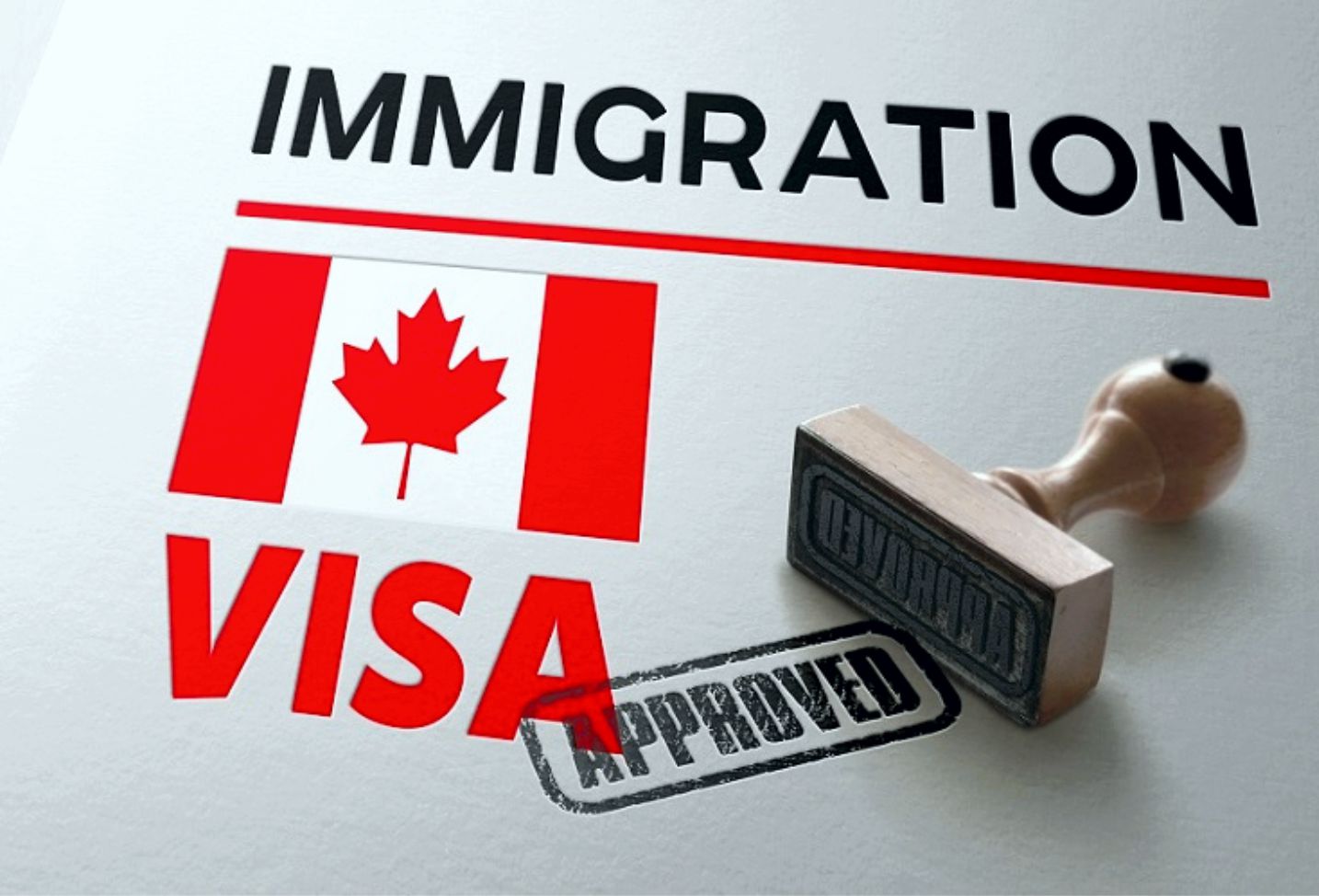Moving to Canada with your family is a transformative decision, offering numerous opportunities for a better quality of life, education, and career prospects. This guide provides a comprehensive overview of the steps and considerations involved in making this significant move.
1. Check Your Eligibility
The first step in moving to Canada is determining your eligibility for immigration. Canada offers various immigration programs, each with its own specific criteria:
- Express Entry: Includes the Federal Skilled Worker Program, Federal Skilled Trades Program, and Canadian Experience Class.
- Provincial Nominee Programs (PNPs): Allow provinces and territories to nominate individuals based on local labor needs.
- Family Sponsorship: For Canadian citizens and permanent residents to sponsor family members.
- Quebec-Selected Skilled Workers: For those who intend to live in Quebec.
- Start-Up Visa: For entrepreneurs planning to establish a business in Canada.
Use the Come to Canada tool on the Government of Canada’s website to find the best program for your situation.
2. Gather Required Documents
Once you’ve identified the appropriate immigration program, gather all the necessary documents for your application. Commonly required documents include:
Required Documents for Moving to Canada with Your Family
Passports: Ensure that all family members have valid passports. For those applying for permanent residency, passports should be valid for at least six months beyond the intended date of entry into Canada.
Birth Certificates: Provide certified copies of birth certificates for all family members to establish identity and family relationships.
Marriage Certificate/Civil Partnership Certificate: If applicable, provide a certified copy of your marriage certificate or civil partnership certificate to prove your relationship with your spouse or partner.
Educational Credentials: Submit copies of educational diplomas, degrees, or certificates. These documents may be needed to assess your qualifications for skilled worker programs or educational equivalency.
Work Experience Documents: Provide evidence of your work experience, such as employment letters, pay stubs, or contracts. These documents are often required to demonstrate eligibility for skilled worker programs or provincial nominee programs.
Language Proficiency Test Results: If required, submit the results of language proficiency tests like the IELTS (International English Language Testing System) or CELPIP (Canadian English Language Proficiency Index Program). These tests assess your ability to communicate in English or French, which is often a requirement for immigration programs.
Police Clearance Certificates: Obtain police clearance certificates or criminal record checks from each country or territory where you have lived for a certain period, typically within the past 10 years. These documents are required to assess your admissibility to Canada.
Medical Examinations: Undergo medical examinations conducted by designated physicians to assess your health and admissibility to Canada. Immigration, Refugees, and Citizenship Canada (IRCC) will provide instructions on how to complete the medical examination if required.
Proof of Funds: Provide proof of financial resources to support yourself and your family members during your initial settlement in Canada. This may include bank statements, investment documents, or letters of financial support.
Other Supporting Documents: Depending on your specific circumstances and the immigration program you’re applying for, additional documents may be required. These could include proof of relationship with sponsoring family members, proof of business ownership or investment for entrepreneur programs, or proof of refugee status for humanitarian programs.
Important Tips
Carefully review the document checklist provided by Immigration, Refugees, and Citizenship Canada (IRCC) for the specific immigration program you’re applying for. Ensure that all documents are accurately completed, certified, and translated into English or French if necessary. Failure to provide the required documents can result in delays or refusal of your immigration application.
3. Submit Your Application
A Step-by-Step Guide to Submitting Your Immigration Application to Canada
Submitting your immigration application to Canada involves specific procedures outlined by Immigration, Refugees, and Citizenship Canada (IRCC). Here’s a step-by-step guide on how to submit your application:
Create an Online Account: If you’re applying for permanent residency through an online application system such as Express Entry or the Provincial Nominee Program (PNP), you’ll need to create an online account on the IRCC website. This account allows you to submit your application, pay fees, and track the status of your application.
Complete the Application Form: Fill out the appropriate application form(s) based on the immigration program you’re applying for. Ensure that all the information provided is accurate and up-to-date. The application forms can be accessed through your online account on the IRCC website.
Gather Required Documents: Collect all required supporting documents as outlined in the document checklist provided by IRCC. This may include passports, birth certificates, marriage certificates, educational credentials, language test results, police clearance certificates, and proof of funds.
Upload Documents and Submit Application: Scan and upload all required documents to your online account on the IRCC website. Follow the instructions provided to complete your application and submit it electronically. Pay the required application fees online using a credit card or other accepted payment method.
Pay Application Fees: Pay the required application fees as specified by IRCC. Fees may vary depending on the immigration program and the number of family members included in the application. Ensure that you pay the correct fees to avoid delays in processing.
Submit Biometrics (if required): If you’re required to provide biometric information (fingerprints and photo), you’ll receive instructions on how to do so after submitting your application. You’ll need to visit a designated biometric collection center to provide your biometric data.
Wait for Processing: After submitting your application, it will be processed by IRCC. Processing times vary depending on the immigration program, the volume of applications, and other factors. You can check the status of your application online using your account on the IRCC website.
Provide Additional Information (if requested): In some cases, IRCC may request additional information or documents to assess your application. Cooperate with any requests promptly and provide accurate information as needed.
Receive a Decision: After reviewing your application, IRCC will decide whether to approve or deny your application for permanent residency. If approved, you’ll receive a Confirmation of Permanent Residence (COPR) and a permanent resident visa.
Complete Landing Procedures: If your application is approved, you’ll need to travel to Canada and undergo landing procedures at a port of entry. An immigration officer will verify your documents and grant you permanent resident status. You’ll also receive a Permanent Resident Card (PR Card) within a few weeks of landing.
Follow all instructions provided by IRCC and ensure that your application is complete and accurate to avoid delays or refusal. Consider seeking guidance from an immigration lawyer or consultant if you need assistance with your application.
4. Processing Your Immigration Application to Canada
Once you’ve submitted your application for immigration to Canada, the next step is to wait for Immigration, Refugees, and Citizenship Canada (IRCC) to process it. Here’s what you can expect during this period:
- Processing Times: Processing times vary based on the type of application, the immigration program, the volume of applications, and the complexity of your case. Check current processing times on the IRCC website.
- Application Status Updates: You can monitor your application status online through your IRCC account. You’ll receive an acknowledgment of receipt and may get updates at various stages, including requests for additional information or decisions.
- Biometric Appointment (if required): If biometrics are required, you’ll receive instructions after submitting your application. Visit a designated biometric collection center to provide your fingerprints and photo, which may add time to the process.
- Background and Security Checks: IRCC will conduct background and security checks on you and any accompanying family members to ensure you meet the admissibility requirements.
- Requests for Additional Information: IRCC may contact you for additional information or documents to assess your application. Respond promptly to avoid delays.
- Medical Examinations: If medical examinations are required, IRCC will provide instructions during the processing period.
- Waiting Period: Be patient during the waiting period and avoid unnecessary inquiries unless it’s been significantly longer than the posted processing times. Delays can occur, but IRCC is working to process applications efficiently.
- Receive a Decision: Once processed, you’ll receive a decision from IRCC. If approved, you’ll get a Confirmation of Permanent Residence (COPR) and a permanent resident visa.
Tips During the Processing Period
- Keep your contact information up-to-date.
- Monitor communications from IRCC regarding your application.
- Contact IRCC for assistance if you have any concerns or questions.
By following these guidelines, you can ensure a smoother process and stay informed about your application’s progress.
5. Plan for your Destination
While your application is being processed, start planning for your destination with your family:
Toronto, Ontario: As Canada’s largest city, Toronto offers diverse job opportunities across various industries, including finance, technology, and healthcare. It boasts a multicultural population, world-class cultural attractions, and excellent public transportation. However, the cost of living can be higher compared to other cities in Canada.
Vancouver, British Columbia: Located on the west coast, Vancouver is renowned for its natural beauty, mild climate, and outdoor recreational opportunities. The city’s economy thrives on industries such as tourism, film production, and technology. While Vancouver offers a high quality of life, housing costs can be relatively expensive.
Montreal, Quebec: Montreal is a vibrant and culturally rich city known for its festivals, cuisine, and historic architecture. It’s a hub for arts and culture, with a thriving music and arts scene. Montreal is also home to several universities and research institutions, making it an attractive destination for students and academics.
Calgary, Alberta: Situated in Alberta, Calgary is known for its strong economy, particularly in the oil and gas industry. The city offers abundant job opportunities in sectors such as energy, finance, and engineering. Calgary boasts a high standard of living, affordable housing, and proximity to outdoor recreational areas in the Rocky Mountains.
Ottawa, Ontario: As Canada’s capital city, Ottawa offers a stable job market with opportunities in the government, technology, and education sectors. It’s known for its historic landmarks, cultural institutions, and scenic landscapes along the Ottawa River. Ottawa also offers a relatively lower cost of living compared to larger cities like Toronto and Vancouver.
Edmonton, Alberta: Edmonton, Alberta’s capital city, is a major economic hub in the province. It offers diverse job opportunities in industries such as healthcare, education, and manufacturing. Edmonton is known for its festivals, cultural events, and expansive river valley park system.
Halifax, Nova Scotia: Located on the east coast, Halifax is a charming coastal city known for its maritime heritage, historic sites, and friendly community. The city offers job opportunities in sectors such as shipbuilding, healthcare, and tourism. Halifax provides a relaxed lifestyle with access to beautiful beaches and outdoor activities.
When choosing a destination in Canada, consider factors such as job prospects in your field, cost of housing, climate preferences, and lifestyle preferences for your family. Research each city thoroughly to determine which one best aligns with your needs and aspirations for a new life in Canada.
6. Manage Your Finances
Financial planning is crucial for a smooth transition. Consider the following:
- Open a bank account: Research Canadian banks and their newcomer packages.
- Transfer funds: Choose the best method for transferring money to Canada, considering exchange rates and fees.
- Create a budget: Prepare a budget for initial expenses such as housing, food, transportation, and other necessities.
7. Finalize Travel Arrangements
Once your application is approved, you will receive a Confirmation of Permanent Residence (COPR) and a visa, if required. Finalize your travel arrangements:
- Book flights: Look for the best deals to Canada.
- Prepare for customs: Familiarize yourself with Canadian customs regulations.
- Pack essentials: Include important documents, clothing, personal items, and necessities for the first few weeks.
8. Settle In
Upon arrival in Canada, complete these steps:
- Clear customs and immigration: Present your COPR, visa, and other required documents.
- Obtain a Social Insurance Number (SIN): Apply for a SIN at a Service Canada office to work and access government services.
- Apply for health insurance: Register for provincial health insurance if you haven’t done so already.
- Enroll children in school: Complete the school enrollment process.
9. Adapt to Your New Life in Canada
Starting your new life in Canada as a permanent resident is both exciting and transformative. Here are some steps to help you settle in and begin building a fulfilling life in Canada:
- Explore Your Neighborhood: Take the time to explore your new neighborhood and familiarize yourself with local amenities such as grocery stores, schools, parks, and public transportation. Get to know your neighbors and introduce yourself to members of your community.
- Set Up Your Home: Settle into your new residence by unpacking, arranging furniture, and making your living space comfortable. If you’re renting, review your lease agreement and familiarize yourself with any rules or regulations.
- Apply for Provincial Healthcare: Apply for provincial healthcare coverage in your province of residence to access healthcare services in Canada. Each province and territory has its own healthcare insurance plan, so be sure to research the requirements and application process.
- Open a Canadian Bank Account: Open a Canadian bank account to manage your finances and conduct transactions in Canadian dollars. Compare different banks and account options to find the best fit for your needs.
- Obtain a Social Insurance Number (SIN): Apply for a Social Insurance Number (SIN) from Service Canada. Your SIN is a unique identifier that you’ll need for employment, paying taxes, accessing government benefits, and other purposes.
- Register Children in School: If you have school-aged children, enroll them in school and familiarize yourself with the Canadian education system. Contact your local school board or visit their website for information on registration and enrollment procedures.
- Find Employment or Further Education: Begin your job search or explore opportunities for further education and professional development in Canada. Update your resume to align with Canadian standards, and consider networking with professionals in your field.
- Join Community Groups and Organizations: Get involved in local community groups, cultural organizations, and newcomer services to meet new people, make connections, and participate in social activities. These groups can also provide valuable support and resources as you adjust to life in Canada.
- Learn English or French: If English or French is not your first language, consider enrolling in language classes to improve your language skills. Language proficiency is essential for communication, employment opportunities, and integration into Canadian society.
- Stay Informed and Adapt: Stay informed about Canadian laws, regulations, and cultural norms to ensure that you’re adapting successfully to your new environment. Be open-minded, flexible, and willing to embrace new experiences and opportunities.
Conclusion
Starting a new life in Canada as a permanent resident is a significant milestone filled with possibilities and opportunities for personal and professional growth. Embrace the journey, seek support when needed, and enjoy all that Canada has to offer as you embark on this new chapter of your life.
Moving to Canada with your family is a significant and rewarding journey. By following this step-by-step guide, you can navigate the process confidently and look forward to a new life filled with opportunities in Canada.





Leave a Comment